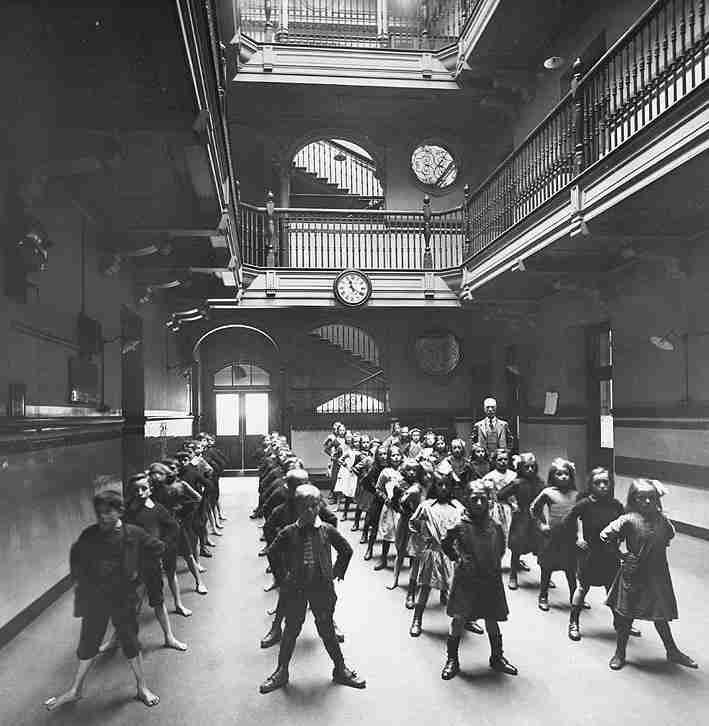
Figure 1.--Here we see the children at the Queen Mary Street Public School doing exercizes or drill in 1916. This was a common activity in British schools at the time.


Figure 1.--Here we see the children at the Queen Mary Street Public School doing exercizes or drill in 1916. This was a common activity in British schools at the time. |
A number of Scottish schools seemed to be named after the street where they were located. We have mo information about this school other than it is in Glasgow. We wonder about the name of the school. We are not sure what Queen Mary the street is named after. Surely not English Queen Mary (Bloody Mary). Mary Queen of Scotts is a possibility. Another possibility was the comtemporary Queen Mary, King George V's wife. Another interesting part of the name. English schools used the term public to mean private. The Scotts seem to use the term to mean state school as the term is more commonly used outside England. We have an image giving a interesting view inside the school in 1916. We not only see the inside of the school, but the students as well. It seems to be quite a substantial school. The children are doing exercizes or drill in the centtal hallway of the school which looks to have been made large enough for such activities. The children do not wear uniforms. Some of the boys wear Eton collars. Quite a few of the children, the boys more than the girls, were barefoot. One question we had about Scotland in the early 20th century was to what extent boys wore kilts. As far as we can tell, at least with working-class children in the major cities, the kilt was not worn. Our archive, however, is still quite limited.
A number of Scottish schools seemed to be named after the street where they were located. We wonder about the name of the school. We are not sure what Queen Mary the street is named after. Surely not English Queen Mary (Bloody Mary). Mary Queen of Scotts is a possibility. Another possibility was the comtemporary Queen Mary, King George V's wife.
We have mo information about this school other than it is in Glasgow. Glasgow is one of Scotland's two principal cities. It is an industrial port city. It is on Scotland's east coast facing Ireland. Unlike most of Scotland, there is a substantial Irish Catholic population in the city.
Another interesting part of the name. English schools used the term public to mean private. The Scotts seem to use the term to mean state school as the term is more commonly used outside England.
The photograph is dated. It was taken in 1916. This was during World War I.
We have an image giving a interesting view inside the school in 1916.
This seems to be quite a substantial school. It appears to have three stories. Note the large school bell at the left. That must have really got some attention when it went off.
We not only see the inside of the school, but the students as well. It certainly looks to be a strictly disciplined school. The children are doing exercizes or drill in the centtal hallway of the school which looks to have been made large enough for such activities. I'm not quite sure how drill was done. My guess is that there were school regulations about this. We note several images of drll at British schools. I do not know if it was instead of or in addition to recess, often called "morning break" in Britain. The purpose was only in part for physical development, building muscles and strong shoulders. Another goal was to instill discipline in the children.
The children do not wear uniforms. Some of the boys wear Eton collars. Quite a few of the children, the boys more than the girls, were barefoot. We note aot of Scottish children going barefoot in the early 20th century. Scotland was a poor part of Britain and there were terrible slums in Glasgow. I'm not sure if the War was a factor here. We seem to see more barefoot Scottish children than English children, but this is only our initial assessment.
One of the teachers is pictured in the background. He may be John Robertson, who was headmaster of the school in 1916.
One question we had about Scotland in the early 20th century was to what extent boys wore kilts. As far as we can tell, at least with working-class children in the major cities, the kilt was not worn. Our archive, however, is still quite limited.
Related Chronolgy Pages in the Boys' Historical Web Site
[The 1880s]
[The 1890s]
[The 1900s]
[The 1910s]
[The 1920s]
[The 1930s]
[The 1940s]
